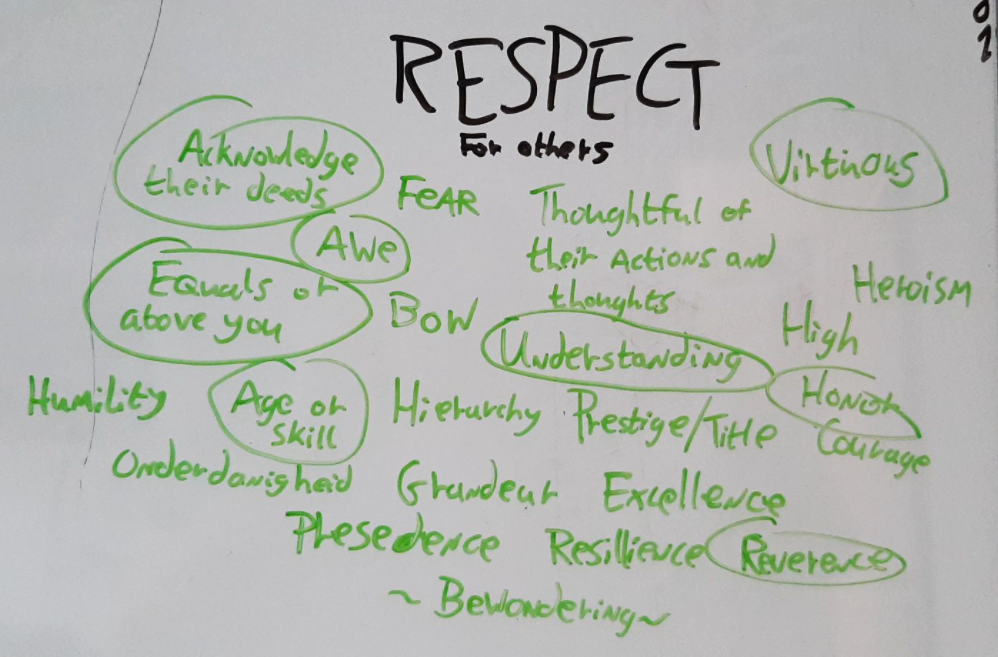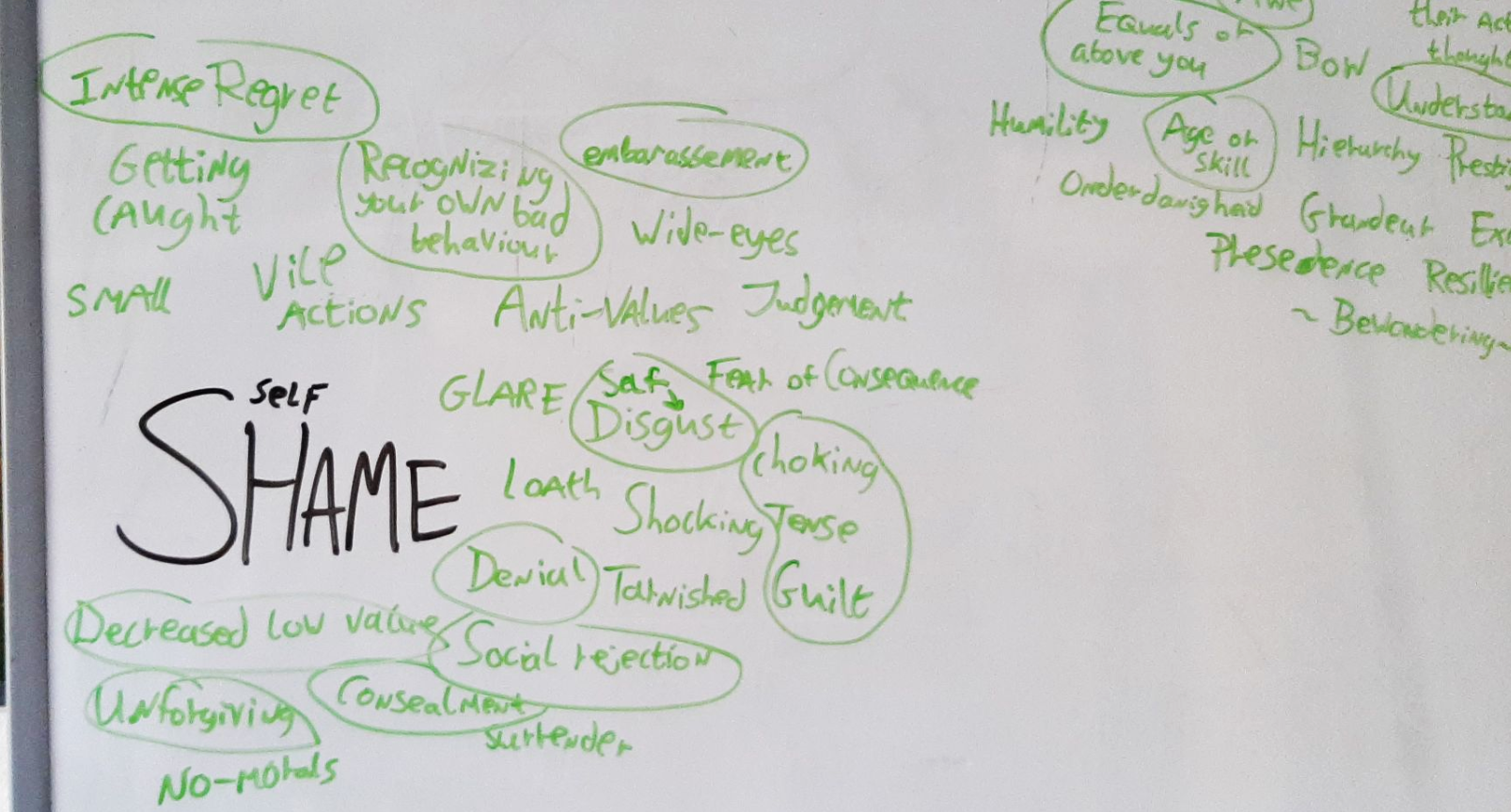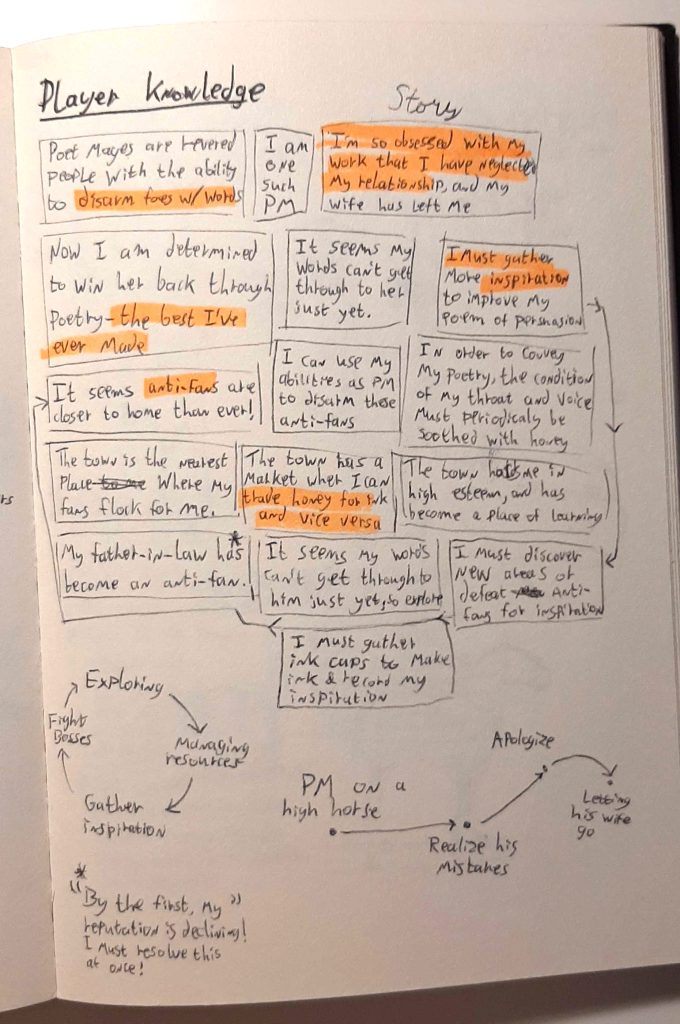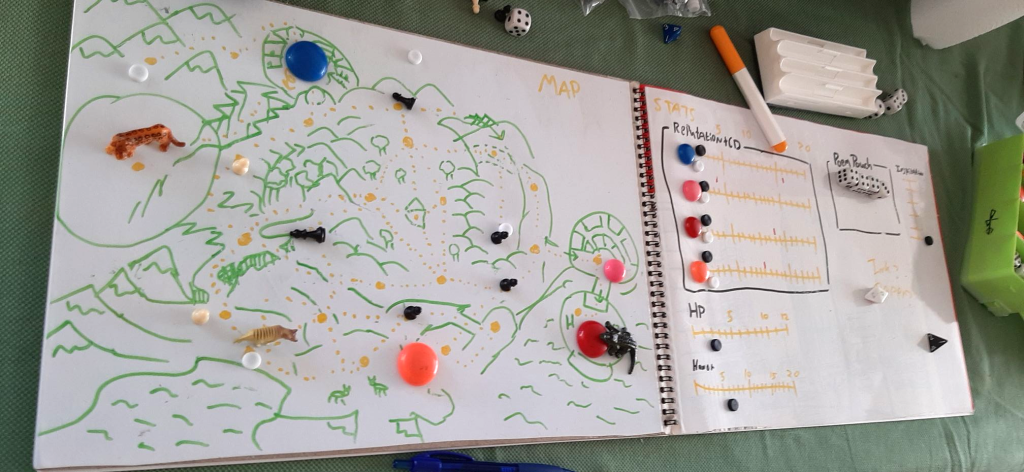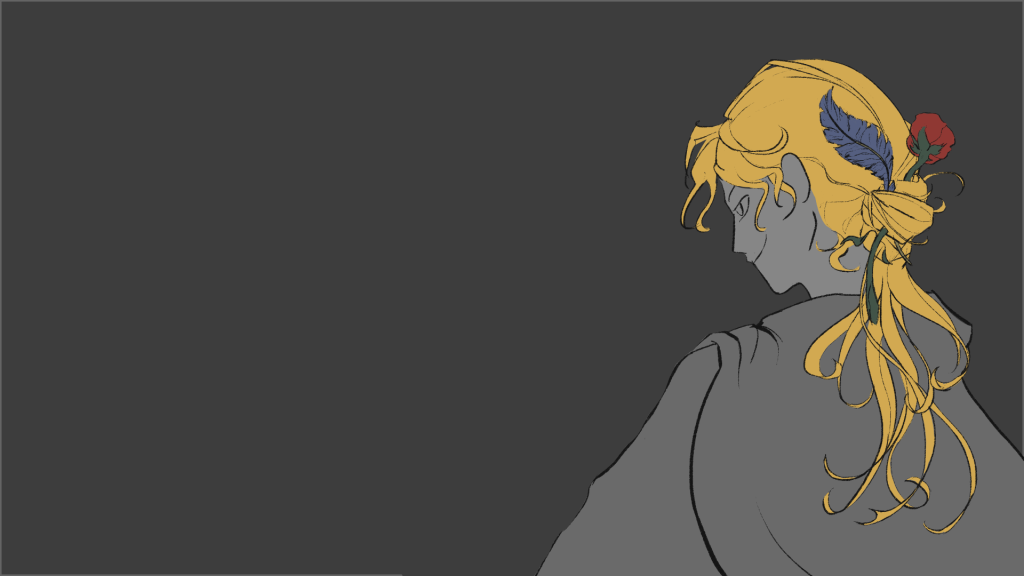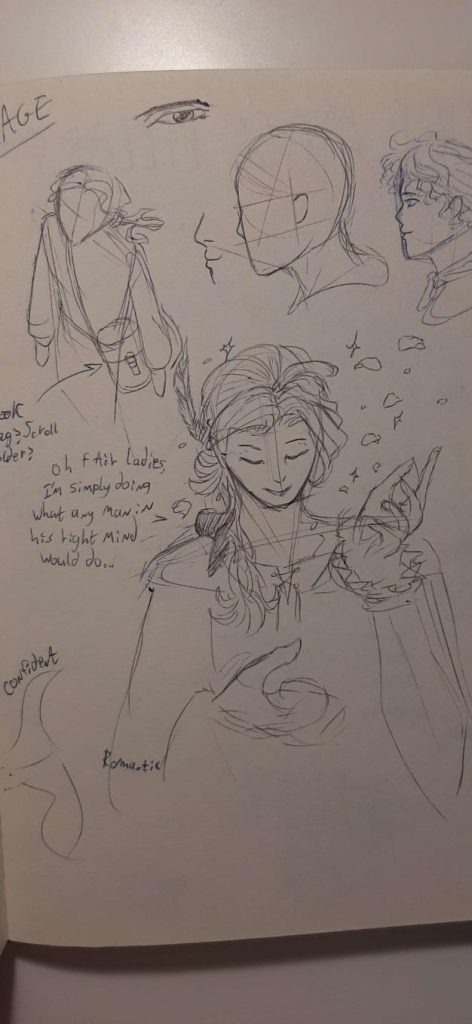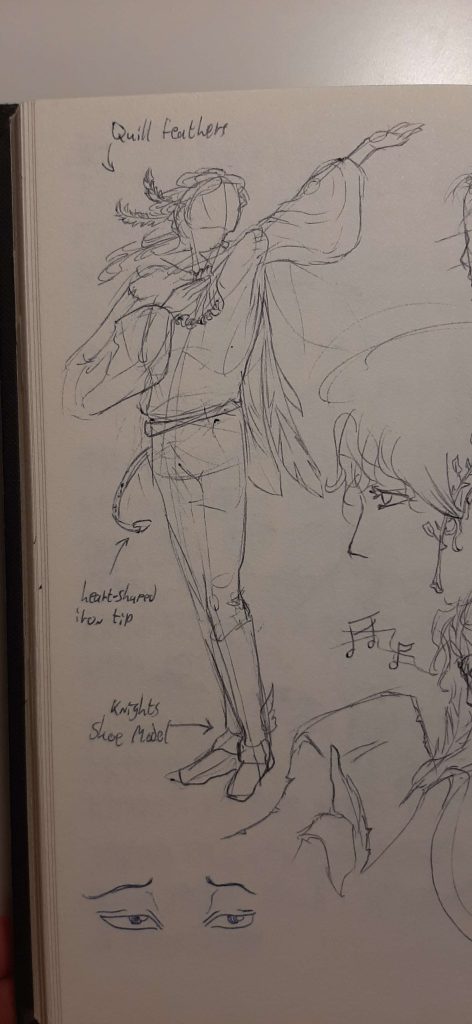Poet Mage
is an experimental project where I apply my theories on level design, whilst prototyping gameplay.
Core-context in gameplay
The core experience is always given context in narrative and mechanics (M). This in turn gives rise to emergent player behaviour (D).
I sketched projections of the thoughts and and experiences I want the player to feel (A). This is essential to level design, for it gives a heading as to how it is to facilitate the core eperience.
Gameplay programming
Planning
I like to designing levels with the mindset of finding the ‘game space formula’. Meaning, finding what level requirements must be, in order to make the mechanics fun and meaningful to the core experience. To this end, I quickly prototyped the mechanic for which I want to design the space. In combat, the player and enemies hurl words at one another. These come from a pool of sentences.
The first step is to understand which attributes and actions both the player and enemies have. After the sketching enemy behaviour on paper, I made a rough UML class diagram.
Enemy AI
Before we can shoot projectiles, enemies must be able to perceive and chase the player. Unreal Engine does this through a combination of features:
- an AI controller;
- a behaviour tree;
- a blackboard;
- behaviour tree tasks (BTT);
and logic therein.
Printing insults
At first, I wasn’t sure how the enemies would yell at you–by words or by letters? I made a prototype where individual letters of a word would be printed. However, this compromised the readability of a word–let alone printing a whole sentence!
This evolved into printing sentences from a pool, into word-by-word attacks. Setting this up while keeping track of the next word and whether or not a sentence was finish proved to be a fun challenge!
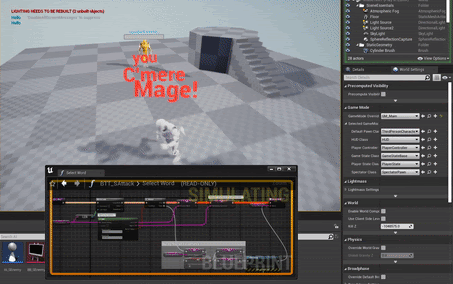
World paper prototype
The pace of interaction and spacing of objects are mainly dictated by mechanics of resources. To test this, I sketched a landscape and UI to keep track of the player’s resources.


